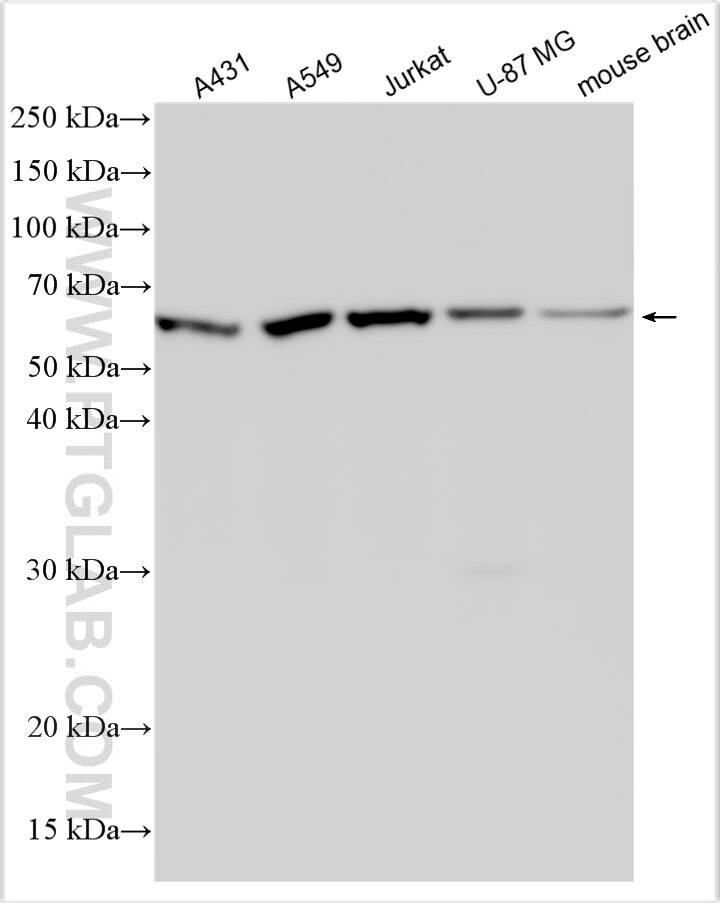Anticorps Polyclonal de lapin anti-TRIM43
TRIM43 Polyclonal Antibody for WB, ELISA
Hôte / Isotype
Lapin / IgG
Réactivité testée
Humain, souris
Applications
WB, ELISA
Conjugaison
Non conjugué
N° de cat : 31053-1-AP
Synonymes
Galerie de données de validation
Applications testées
| Résultats positifs en WB | cellules A431, cellules A549, cellules Jurkat, cellules MG U-87, tissu cérébral de souris |
Dilution recommandée
| Application | Dilution |
|---|---|
| Western Blot (WB) | WB : 1:1000-1:4000 |
| It is recommended that this reagent should be titrated in each testing system to obtain optimal results. | |
| Sample-dependent, check data in validation data gallery | |
Informations sur le produit
31053-1-AP cible TRIM43 dans les applications de WB, ELISA et montre une réactivité avec des échantillons Humain, souris
| Réactivité | Humain, souris |
| Hôte / Isotype | Lapin / IgG |
| Clonalité | Polyclonal |
| Type | Anticorps |
| Immunogène | TRIM43 Protéine recombinante Ag34926 |
| Nom complet | tripartite motif-containing 43 |
| Poids moléculaire observé | 52-60 kDa |
| Numéro d’acquisition GenBank | BC015353 |
| Symbole du gène | TRIM43 |
| Identification du gène (NCBI) | 129868 |
| Conjugaison | Non conjugué |
| Forme | Liquide |
| Méthode de purification | Purification par affinité contre l'antigène |
| Tampon de stockage | PBS avec azoture de sodium à 0,02 % et glycérol à 50 % pH 7,3 |
| Conditions de stockage | Stocker à -20°C. Stable pendant un an après l'expédition. L'aliquotage n'est pas nécessaire pour le stockage à -20oC Les 20ul contiennent 0,1% de BSA. |
Informations générales
TRIM43 (tripartite motif containing 43), also known as TRIM43A. It is expected to be located in the cytoplasm. The calculated molecular weight of TRIM43 is 52 kDa. TRIM43 was also upregulated in herpesvirus-associated diseases in humans, including γ herpesvirus-associated tumors. As such, TRIM43 and its transcription factor DUX4 could potentially serve as biomarkers of active herpesviral replication and pathogenesis (PMID: 30420784).
Protocole
| Product Specific Protocols | |
|---|---|
| WB protocol for TRIM43 antibody 31053-1-AP | Download protocol |
| Standard Protocols | |
|---|---|
| Click here to view our Standard Protocols |


